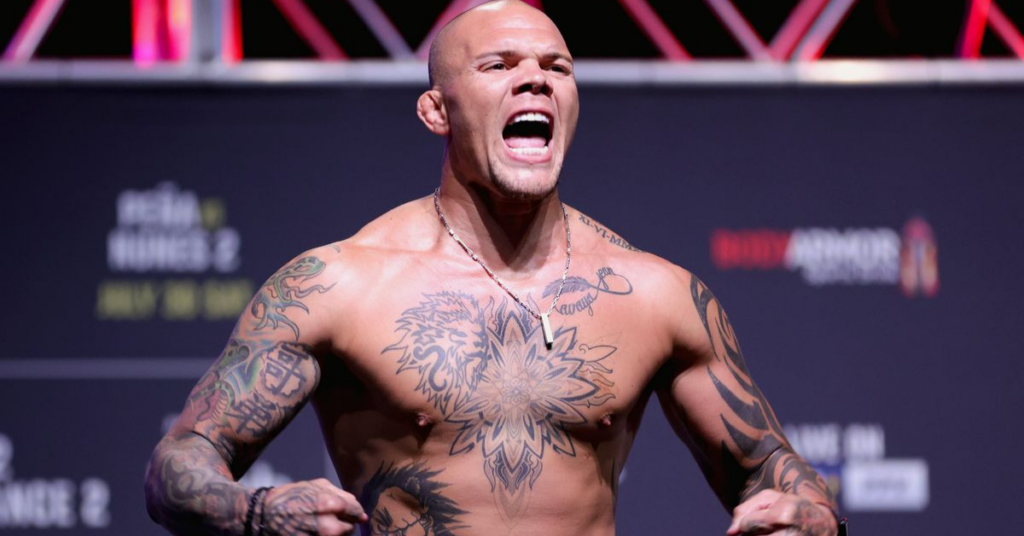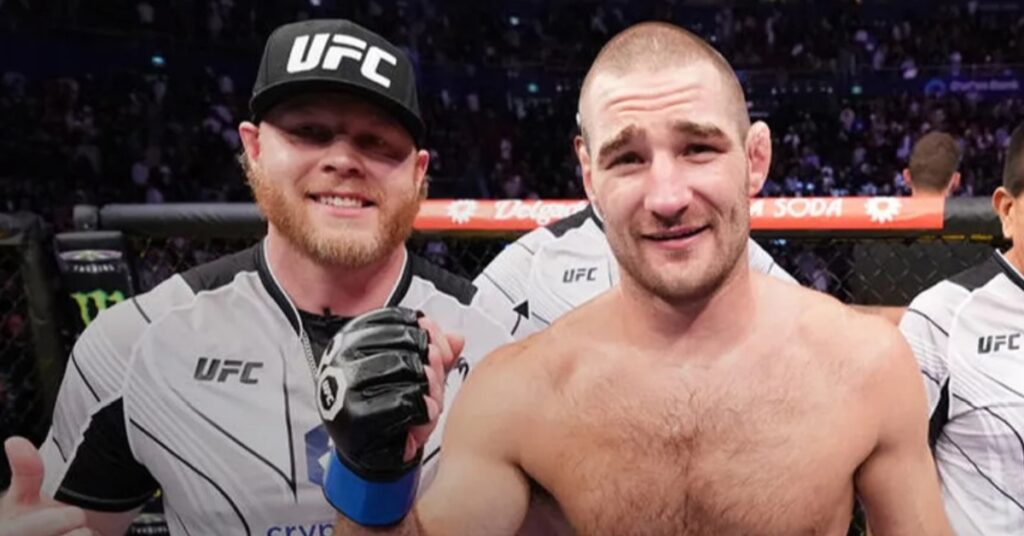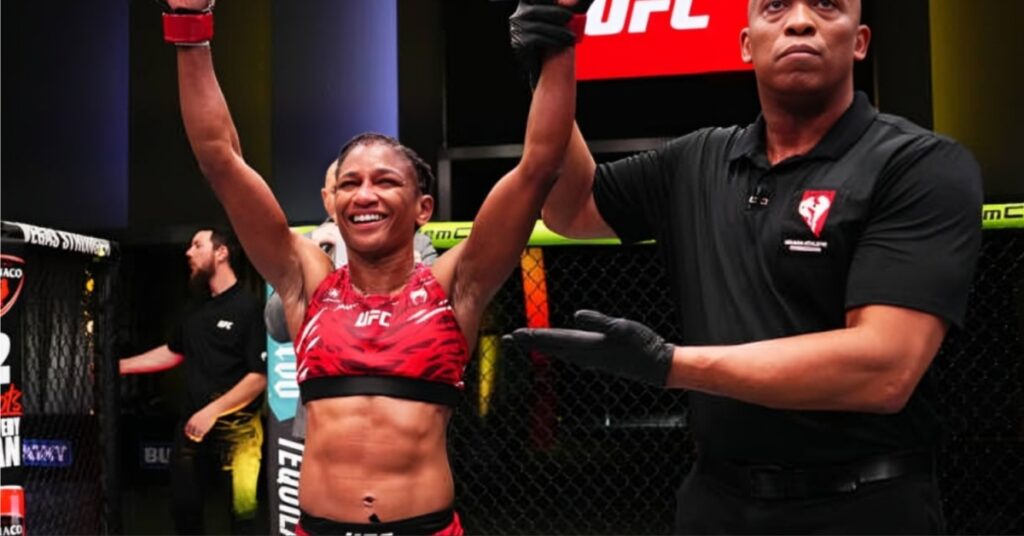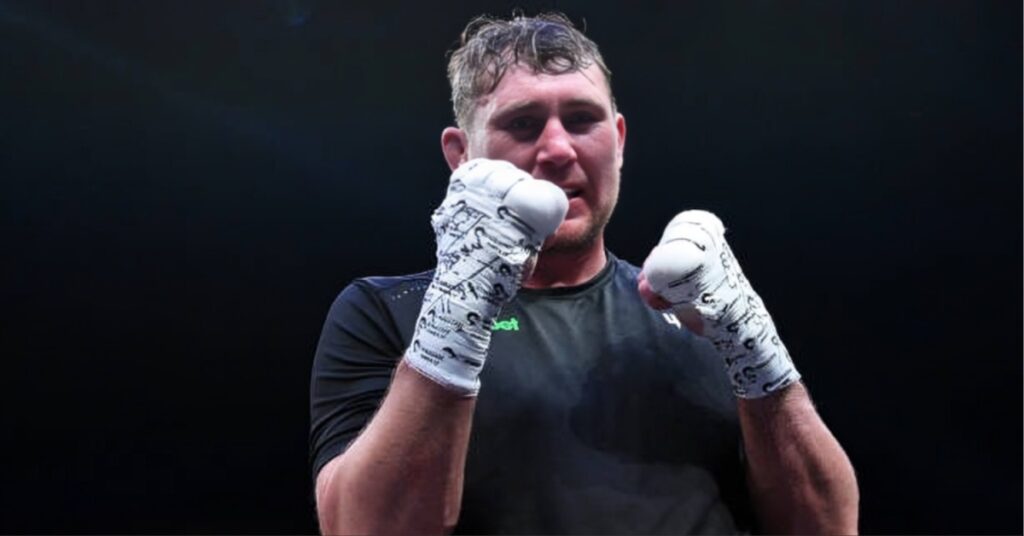Kyokushin Karate: The History
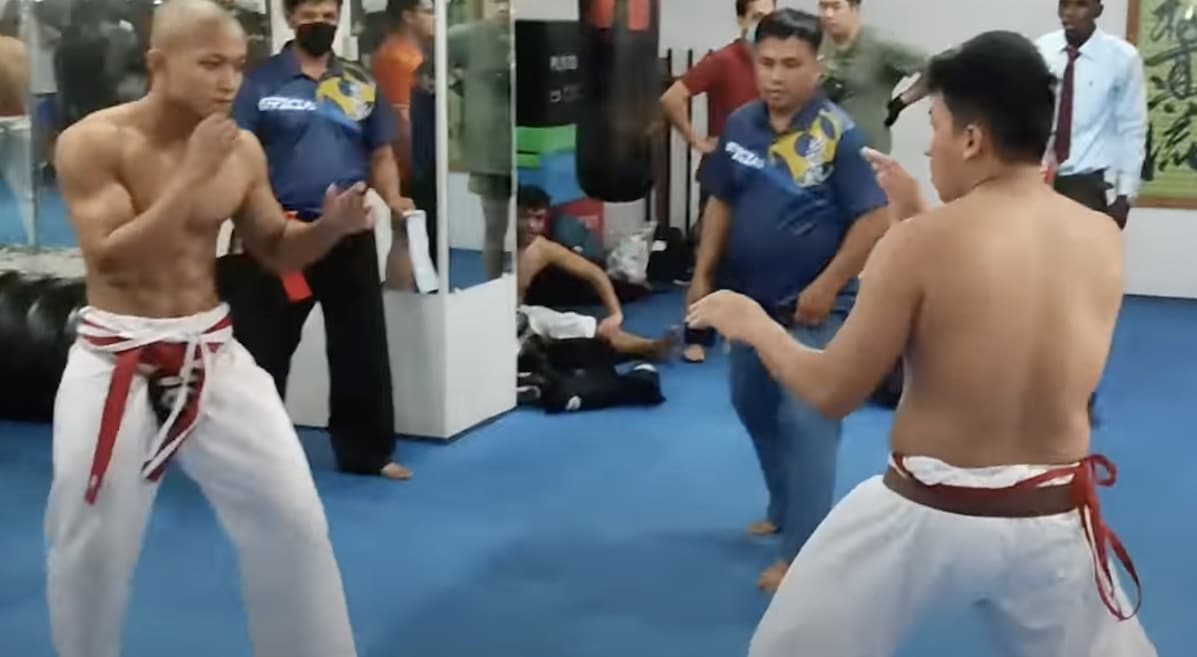
There are numerous types of Karate, but arguably the most vicious form of this martial art is Kyokushin Karate. A special style of Karate where every technique is thrown with as much power as possible.
Here is everything you need to know about the special history of Kyokushin Karate. Going from how it was developed, its principles, the belt system, and rules of a Kyokushin Karate competition.
The History of Kyokushin Karate
The art of Kyokushin Karate was created by Grandmaster Masutatsu “Mas” Oyama, who began developing the style in 1953. Master Oyama was originally a practitioner of Goju-ryu Karate who was teaching this style at his own school called Oyama Dojo.
Oyama’s dojo was located behind Rikkyo University, where he would get many of his students. Eventually, Oyama would stop teaching the Goju-ryu style and began teaching his own style of Karate.
The style of Karate that Oyama would teach used much more force than traditional forms of Karate. His style was one that was focused on strength and unleashing force in every technique.
Mas’ would continue on his project for the next ten years and legitimize what would become known as Kyokushin Karate.
In Japanese, the word “kyokushin” means “ultimate truth.” Meaning that Oyama’s style of Karate shows the true potential of a Kyokushin Karate practitioner.
Known Students of May Oyama
When Oyama started his academy, he would not teach beginners. Instead, he would leave that job to his trusted advanced students to develop the fundamentals of the new students.
Some of the most known early instructors included: famous Japanese actor Masashi Ishibashi, Eiji Yasuda, and ichiro Miyamoto.
Six years after Master Oyama opened his dojo, he would award Hirofumi Okada his black belt. Making him the very first Kyokushin Karate black belt that was promoted personally by the founder May Oyama.
Oyama Establishes the IKOK
Eleven years after Oyama created his Kyokushin style of Karate, he would establish an official organization for his martial art. He would call it International Karate Organization Kyokushin Karate.(IKO/IKOK)
After establishing this organization, Oyama would hand pick black belt students to open their own academies. Not just picking students by their ability, but also by their marketing abilities.
This approach allowed for Kyokushin Karate to become one of the most practiced styles of Karate.
The First Full Contact Kyokushin Karate Competition
Master Oyama did not only develop his own Karate style, but also created his own style of Karate competition. In 1969, Oyama put on the very first All-Japan Full Contact Karate Open Championship.
A unique and more brutal style of sparring that allowed full contact to an opponent’s entire body.(Groin attacks, eye gouges, and bites excluded.) The winner of the very first full contact Karate championship was Terutomo Yamizaki.
Four years after the first full contact Karate tournament, Oyama would put on the full contact world championship. His inaugural world championship event would take place in Tokyo Champion.
Critics of Kyokushin Karate
After the first full contact Karate events, traditionalist Karatekas were critical of Oyama’s style. Calling Kyokushin, a brawling style of Karate for the brutish way Kyokushin practitioners fought.
Oyama detested the moniker of “Kenka Karate (Brawling Karate) that many were calling his style. He believed that his style of Karate was more practical and how Karate should be practiced.
Despite the criticisms, Kyokushin Karate would continue to grow and become internationally practiced.
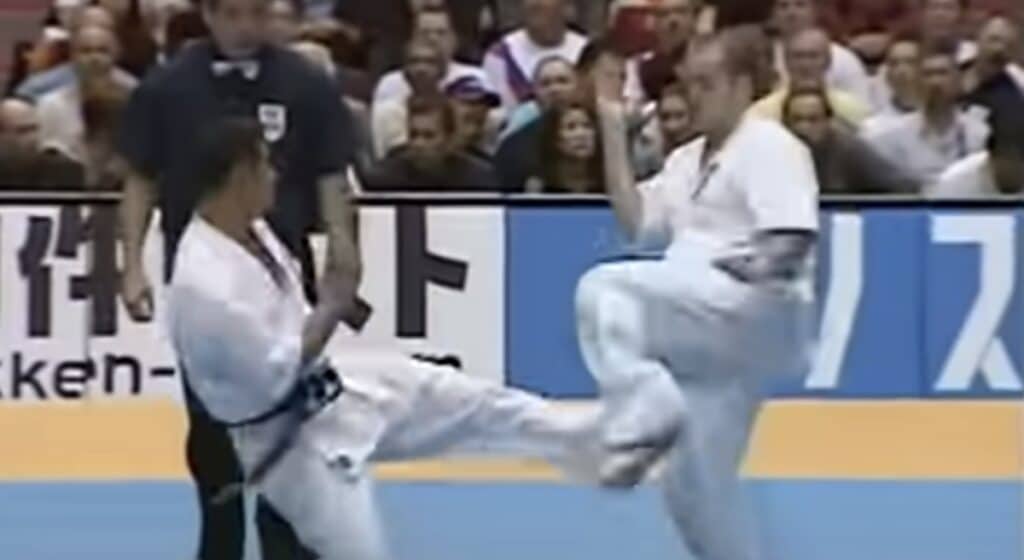
The Principles of Kyokushin Karate
The principles of Kyokushin Karate vary differently than the principles of other forms of Karate. Three specific principles that should be implemented in both your training and personal life.
- Self-Improvement
- Discipline
- Hard Training
Through discipline and hard training, you will continue to become a better you. Applying these principles to your training and everyday life would no doubt help you have a better quality of life.
The Training of Kyokushin Karate
The main thing that separates Kyokushin Karate from other styles of Karate is the hard training. You don’t just do the techniques, but execute them with force.
But just like other forms of Karate, the class in Kyokushin Karate is also broken into three parts.
- Kata
- Kumite(Sparring)
- Self Defense
Kata
In Kyokushin Karate, they also do katas, which are formalized sequences of different fighting techniques. Kyokushin practitioners practice three specific katas, which are the Northern Kata, Southern Kata, and Ura Kata.
The Northern Kata was inspired by Shotokan Karate, while the Southern Kata was inspired by Goju-ryu Karate. Oyama’s Ura Kata was developed to help a student develop balance.
These katas are generally done at the beginning of class before the Kumite or sparring.
Kumite (Sparring)
Kumite(sparring) is done toward the end of class. As you probably already guessed, this is the segment of class where you apply the techniques you practiced earlier in class.
The sparring in Kyokushin Karate is hard, but they tend to never go 100%. Mainly going between 50-80% to save themselves for legitimate full contact competitions or kickboxing matches.
This is an especially important segment of class for more advanced students that actively compete.
Self Defense
The self defense portion of a Kyokushin class has generally gone by the wayside as the style. Mainly due to this style of Karate moving more towards a sports style of practice rather than for self defense.
Master Oyama also never established techniques for self defense in the guidelines of Kyokushin. Each Kyokushin dojo may teach different self defense techniques depending on the instructor(s).
The Kyokushin Karate Belt System
In Kyokushin Karate, there are six lower belts a student must work through before earning their black belt.
- White Belt
- Orange Belt
- Blue Belt
- Yellow Belt
- Green Belt
- Brown Belt
In modern Kyokushin dojos like in most other martial arts with belt rankings, stripes are given out between each promotion.
When you receive a black belt in Kyokushin Karate of Dan, you are given a gold strip after every degree.
The Rules of Kyokushin Karate Competitions
The rules of Kyokushin Karate or full contact Karate competitions are widely different from traditional Karate sparring events. Participants do not wear any form of protection. Just their Karate uniforms and hearts.
Here is a complete breakdown of the All-Japan Full Contact Championship rules taken from the official Kyokushin news website. https://kyokushinkarate.news/en/kyokushin-rules/competition-rules-all-japan-fullcontact-karate-championship
Judging Criteria
- The five referees including the main referee shall judge the competition. However, the final decision rests with the Head Judge.
- Since the decision should be a majority decision, in case of IPPON, WAZA-ARI, HANSOKU, JOGAI, HANTEI, etc, the decision is valid if at least three out of the five referees support it. A decision not supported by the majority, that is less than three of the referees, or a decision supported by only the Main Referee is not valid. However, any of the five referees has the right to protest a decision and claim further discussions. In the discussions, a monitor (video image) might be used as a reference.
- The weighing shall be done with the attendance of referees before the competition.
- If there is a weight difference of more than 7kg between the weight in the application and the weight checked before the competition, the competitor will be disqualified.
- In case a competitor cannot continue the bout due to the opponent’s YUKO WAZA (effective attack), HANSOKU WAZA (foul attack) etc., the tournament doctor may give a “doctor’s stop” after consulting with the five referees or the Head Judge.
Striking Areas
Fights are full contact, but the rules for punches, kicks, and elbows vary. You can kick an opponent anywhere from their legs to head, but not the groin. You are only allowed to throw punches to the body and elbows to the head.
Kumite Rules
- The time of the bouts is as provided later.
- Victory is awarded to the competitor who has scored one full point (IPPON) or the one who has won by decision (including WAZA-ARI – half point) or the one whose opponent has been charged with a foul, or whose opponent has been disqualified.
- The competitors shall enter the competition mat from opposite sides and stand by two lines, red and white, in the center of the fighting area, taking postures of Fudo Dachi, facing the front.
- The bout starts with the Main Referee’s command HAJIME and ends with the Main Referee’s command YAME.
- In case of any accident during the fight, the Main Referee may stop the bout.
- When the Main Referee makes the sign of “Time”, the bout shall stop for a moment, and when he makes the sign of ZOKKOU (continue) the bout shall start again.
Ippon Gachi(Full Point)
An Ippon Gachi is a full point victory in full contact competitions. It is any legal strike that downs the opponent for more than three seconds. The competitor that landed the strike is awarded with the win.
Waza-ari(Half Point)
A Waza-ari is a half point that’s awarded when a competitor drops their opponent for less than three seconds. If the opponent can continue, the fight goes on and their competitor is awarded half a point.
If the fighter that drops earns another Waza-ari, they’re awarded a full Ippon Gachi. Much similar to the rules in Judo, where a half point is given for a semi-clean throw.
Hante(Decision)
If the time limit of the bout expires, the decision will go to the five judges, which is called a “Hante” or decision. For a competitor to win, three of the five judges must vote in their favor.
Famous Kyokushin Karate Fighters
There have been numerous combat sports athletes that became champions with their Kyokushin Karate background. Here are the most famous Kyokushin Karate fighters.
Andy Hug
Andy Hug was the first Kyokushin practitioner that became an international superstar in Karate. After winning multiple full contact titles in Europe, Hug transitioned to kickboxing and Muay Thai
He would go on to win the WKA Super Heavyweight Champion and the 1996 K1 Grand Prix Champion. Using his patented ax kick that made him famous.
Bas Rutten
Bas Rutten is an MMA pioneer and holds a fifth degree black belt in Kyokushin Karate. He would use his Karate and grappling skills to win the Pankration Championship and UFC Heavyweight Championship.
Georges St Pierre
Georges St Pierre is a legend in MMA that was known for being a complete fighter. His base in Kyokushin Karate helped establish him as one of the best MMA fighters of all time.

